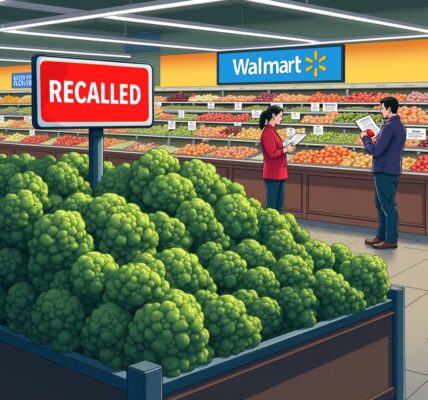As we approach the midpoint of the decade, a pivotal change appears on the horizon in grocery shopping behaviors. According to predictions by Acosta Group, 2025 is set to redefine consumer values and shopping preferences. This shift is spurring interest in authenticity, enjoyable experiences, and new forms of connection with brands and retailers.
In recent years, consumers faced numerous challenges—from navigating the COVID-19 pandemic to dealing with inflationary pressures and supply chain disruptions. Many consumers are now moving away from a mindset focused strictly on price and promotions, suggesting a more optimistic outlook for 2025. Colin Stewart, EVP of Business Intelligence at Acosta Group, remarked, “Last year, it was more about price and promotion optimization to try to force some unit sales. I think consumers are more optimistic going into this year – consumers, manufacturers and retailers are getting tired of this and saying, ‘Let’s get back to something else, let’s start enjoying life’.”
The notion of enjoying life does not negate the importance of practicality, however. In fact, Acosta’s projections for 2025 reveal a nuanced definition of value that is influencing shopper decisions. While price remains a significant factor, consumers are now increasingly seeking authentic connections with brands. As Kathy Risch, SVP of Thought Leadership and Shopper Insights at Acosta, explains, “Consumers have become very astute value seekers, reshaping the overall retail experience by demanding more than discounts.” This evolving landscape emphasizes that retailers must innovate, with 84% of Consumer Packaged Goods (CPG) companies predicting they will develop new offerings in the year ahead.
Acosta Group outlines several groundbreaking predictions for 2025, shedding light on the shopper’s journey and the retail environment:
1. Affordable Indulgence in Food: Modern consumers continue to prioritize value while also craving indulgence, particularly in dining out. While they may be budget-conscious, they are willing to pay for premium flavors and experiences. This concept of ‘affordable indulgence’ is perhaps the new mantra of consumers who wish to savor life’s pleasures without guilt.
2. Innovative In-Store Experiences: Brick-and-mortar stores remain central to grocery shopping, with most retail sales still occurring in physical locations. Acosta emphasizes the importance of enhancing the in-store experience through useful digital applications, dynamic retail media, and AI-driven technologies. Stewart noted the necessity for effective investments by manufacturers to reach targeted shoppers.
3. Social Commerce and Effortless Shopping: The rise of social media is transforming consumer behavior, as more shoppers turn to their feeds for product research and discoveries. Social commerce that seamlessly integrates personalized content with e-commerce allows brands to engage directly with customers. Risch highlights the essential balance between entertainment and convenience, noting that consumers are discovering products they “didn’t know they needed,” leading to quick purchasing decisions.
4. Empowerment Through Health and Wellness: The focus on health is no longer just a seasonal trend; it continues into 2025. Consumers are increasingly expecting transparency from brands regarding their ingredients and health-related practices. Acosta points out the growing interest in individualized health management, food-as-medicine solutions, and new weight-loss methods, illuminating a shift towards empowerment in health-related purchasing decisions.
These predictions present a roadmap for retailers and brands looking to stay ahead in an increasingly competitive environment. The emphasis on creating authentic relationships with customers and offering value in innovative ways will be paramount in driving sales. Successful brands will likely adapt to these consumer expectations by leveraging data to create tailored shopping experiences that resonate with their target demographics.
To tap into these emerging trends effectively, retailers should consider the following strategies:
– Invest in Digital Tools: Retailers must integrate effective digital platforms that enhance customer interactions, whether through loyalty programs, mobile apps, or online engagement. This not only streamlines shopping but also creates a sense of community.
– Focus on Experience: Beyond just selling products, retailers should enhance the shopping experience by hosting interactive events or tastings that can transform a mundane shopping trip into a memorable experience.
– Encourage Authentic Connections: Brands should cultivate authenticity in their communications and marketing. Engaging storytelling can create deeper connections, making consumers feel valued and understood.
– Responsive Marketing: Keeping an ear to the ground for changing health and wellness trends allows brands to pivot quickly, offering relevant products and addressing specific consumer needs directly.
Comprehensively, the landscape of grocery shopping will witness a significant evolution as consumers take the reins in defining their shopping values and preferences. The year 2025 will not only be about meeting expectations but also about shaping enjoyable, meaningful experiences that foster loyalty and strengthen connections.












